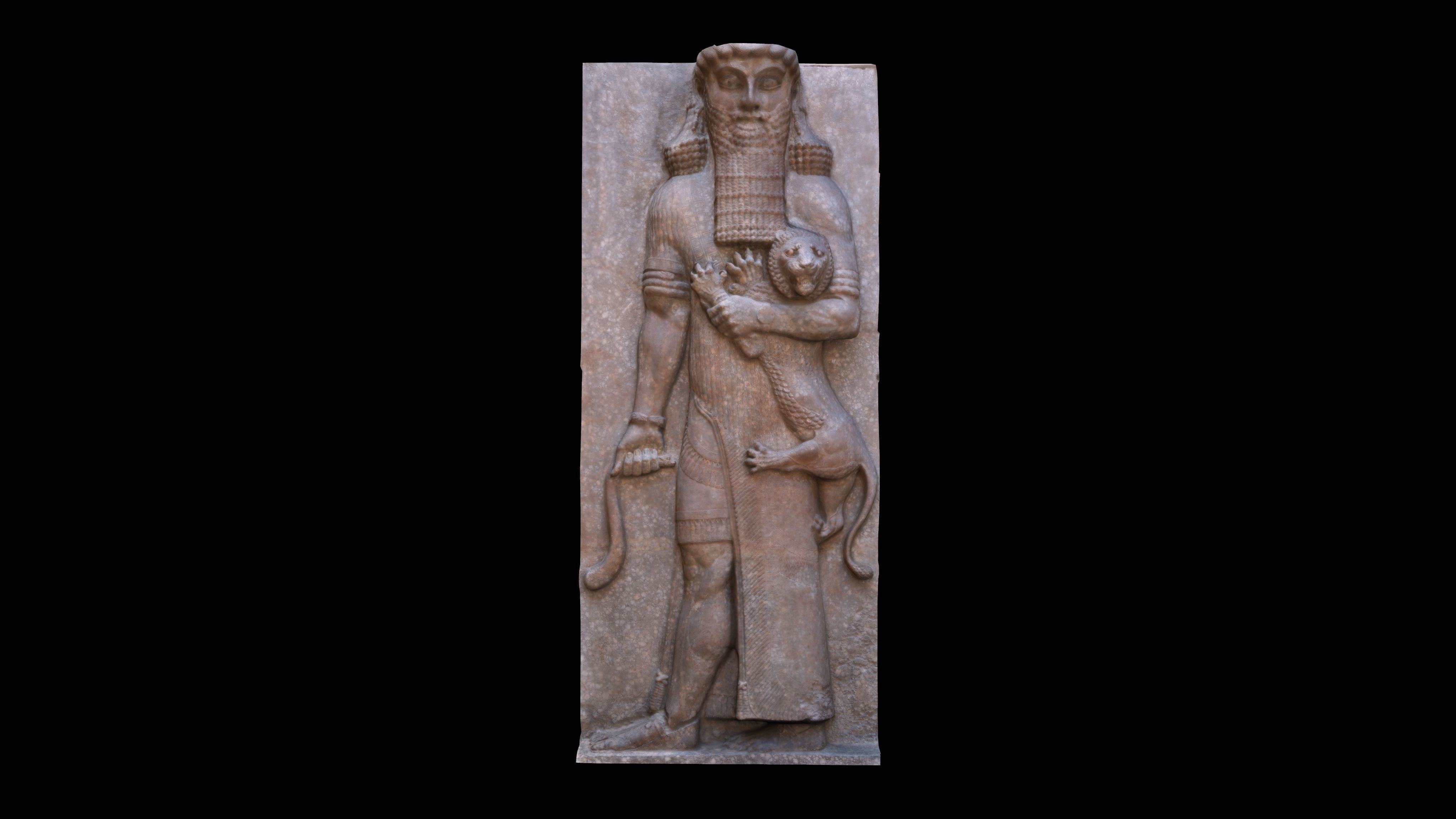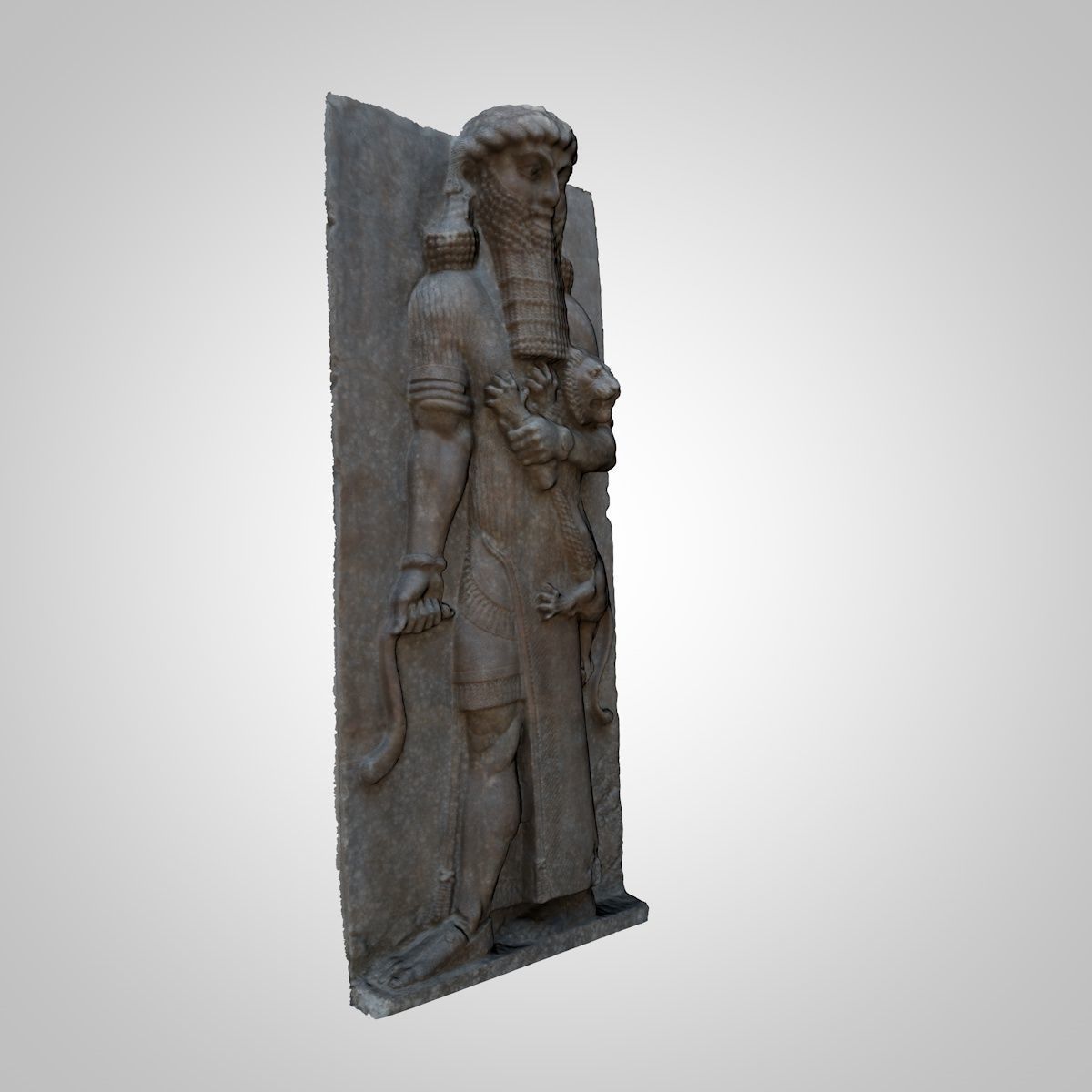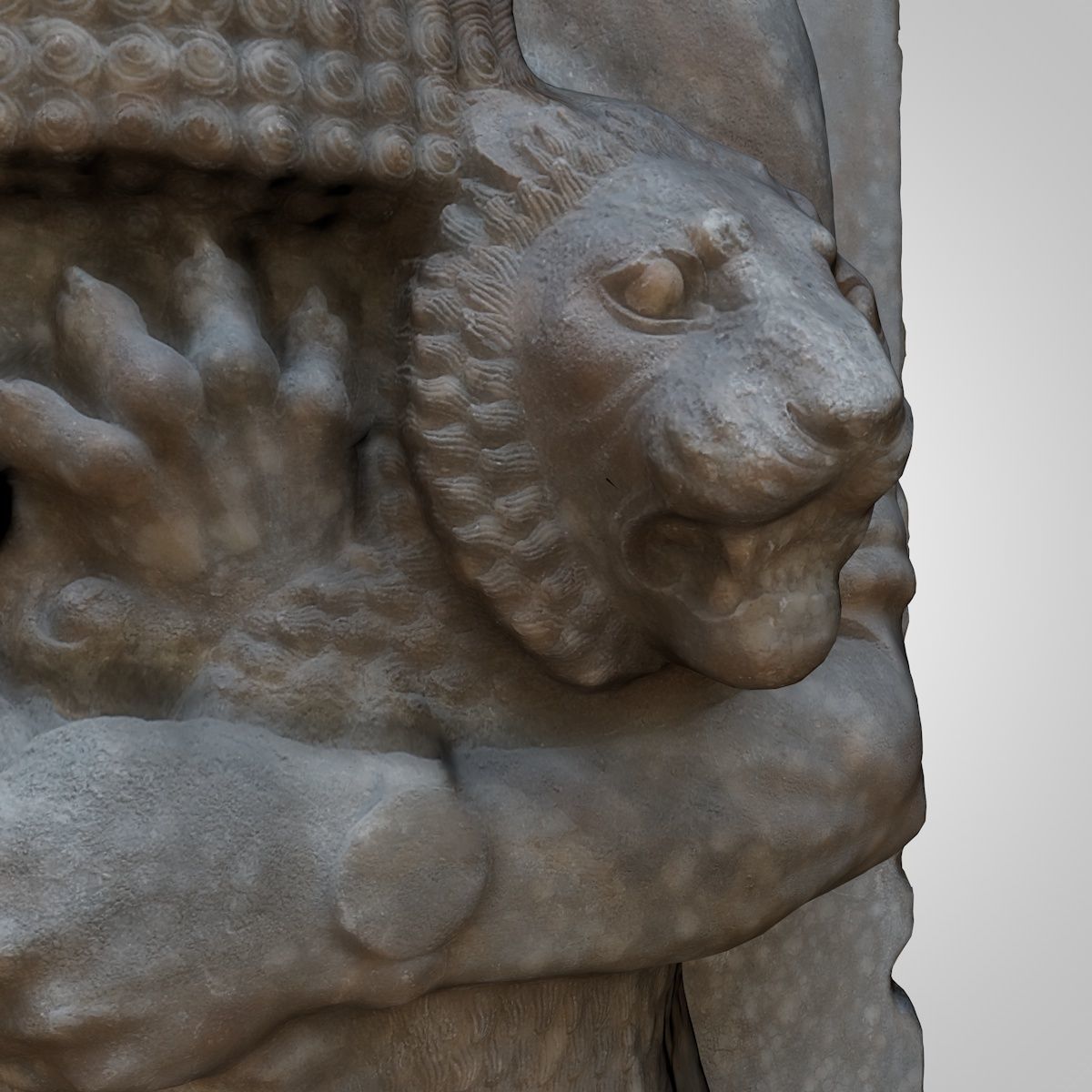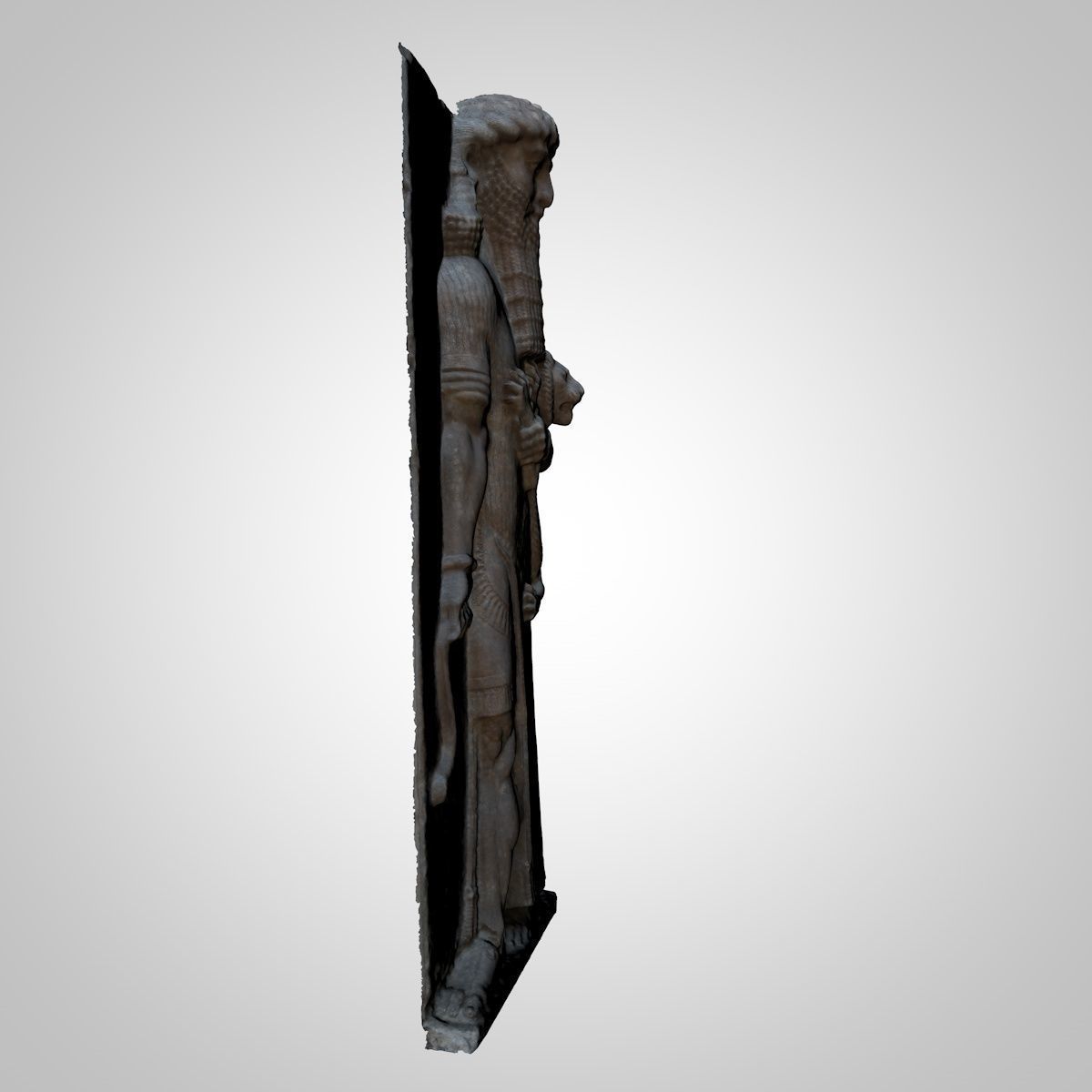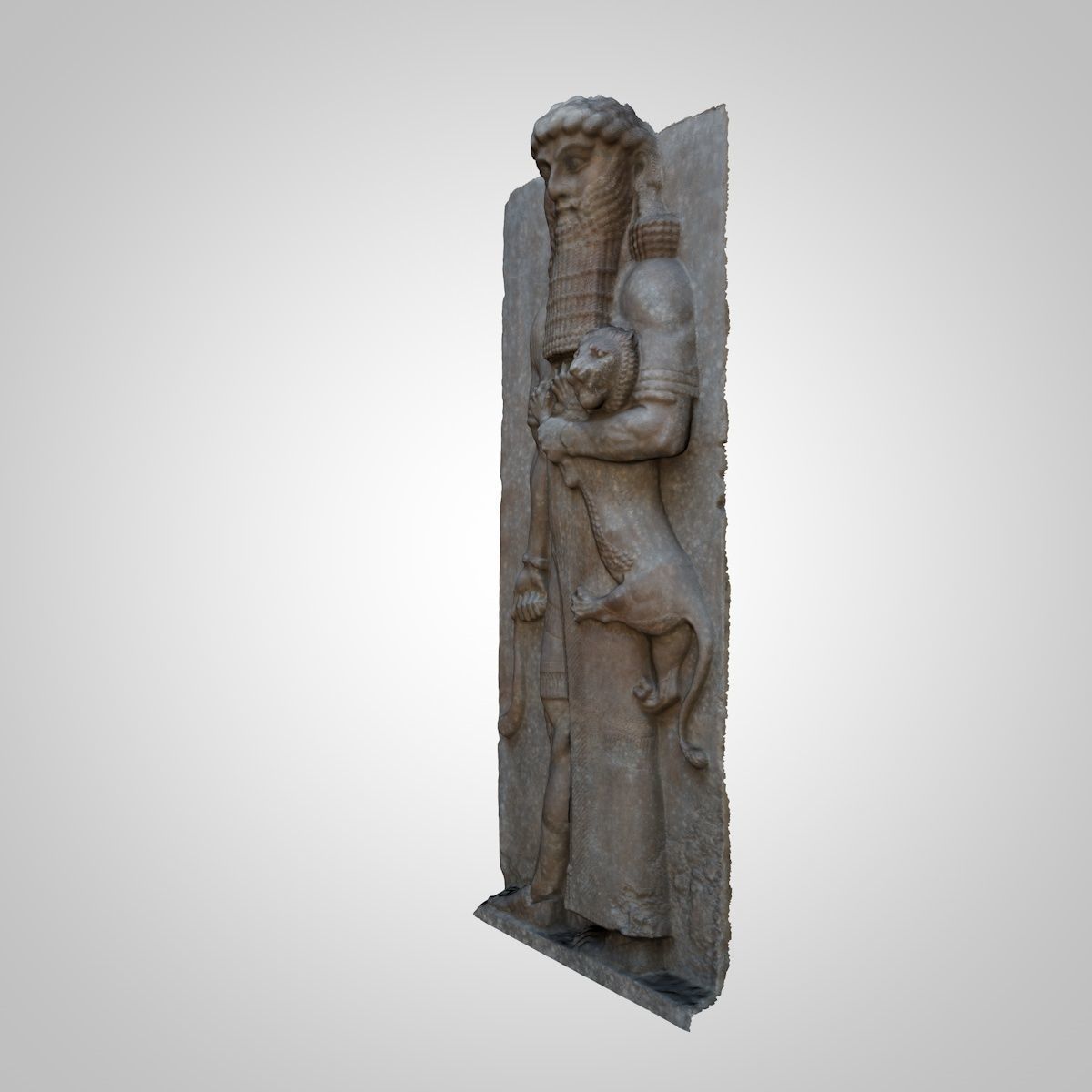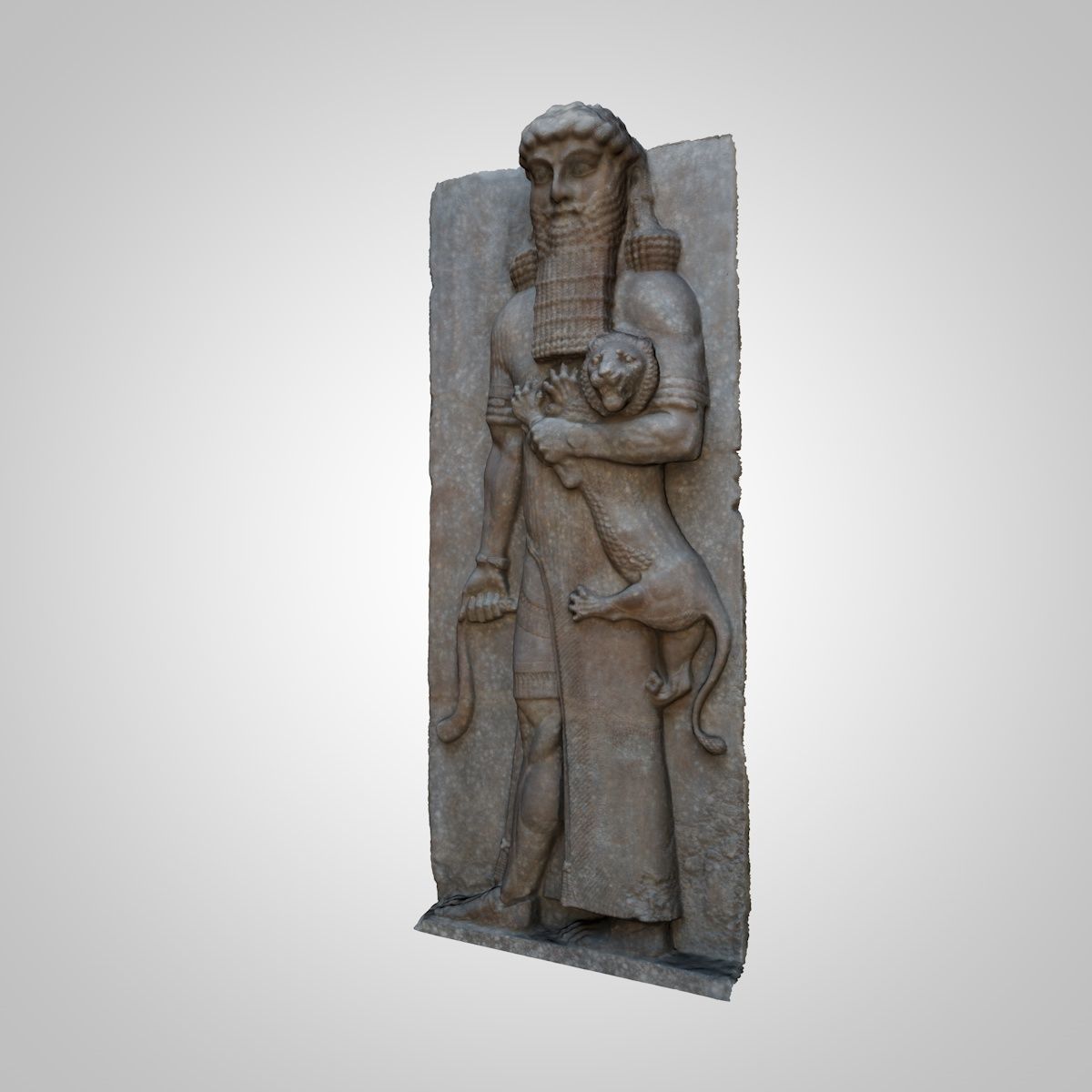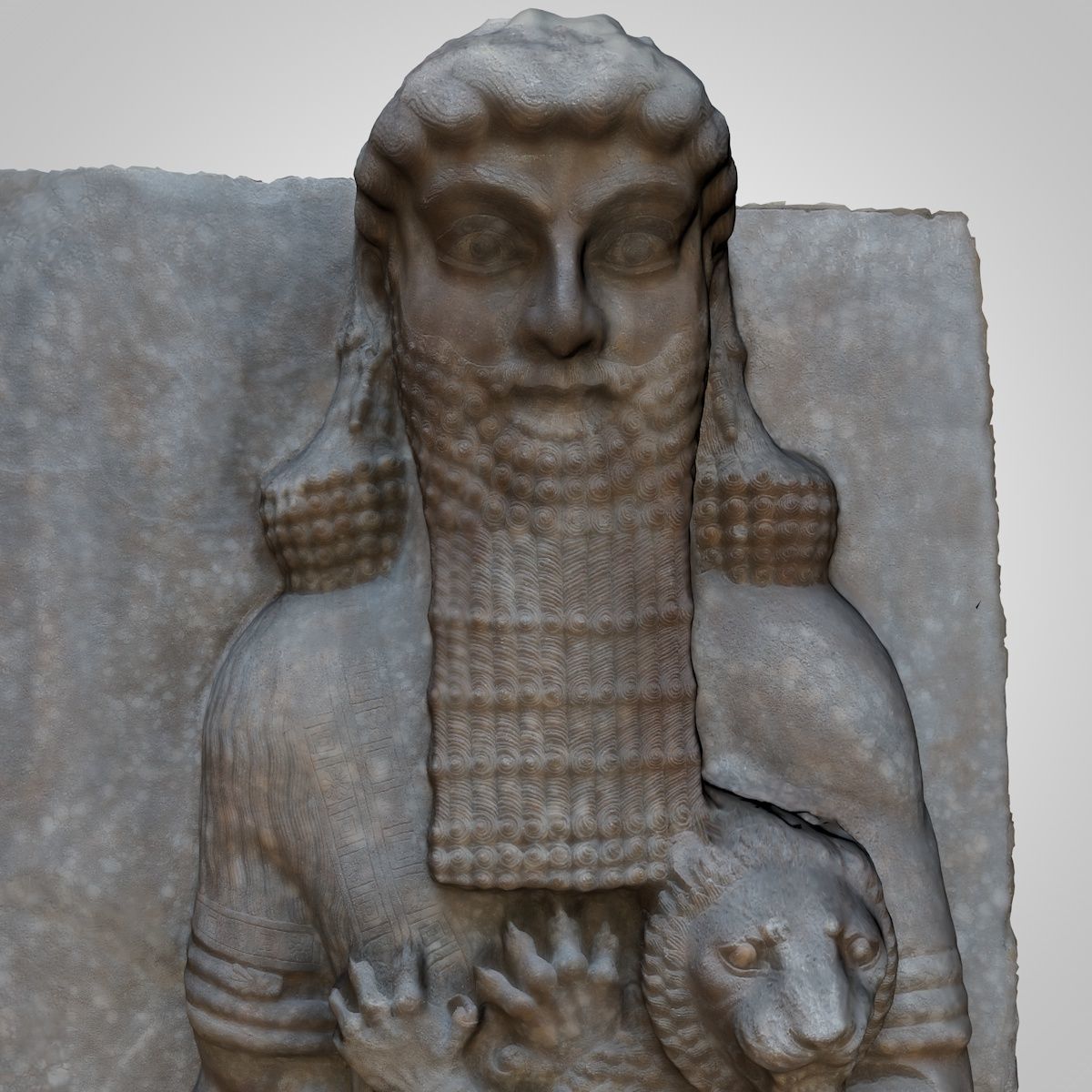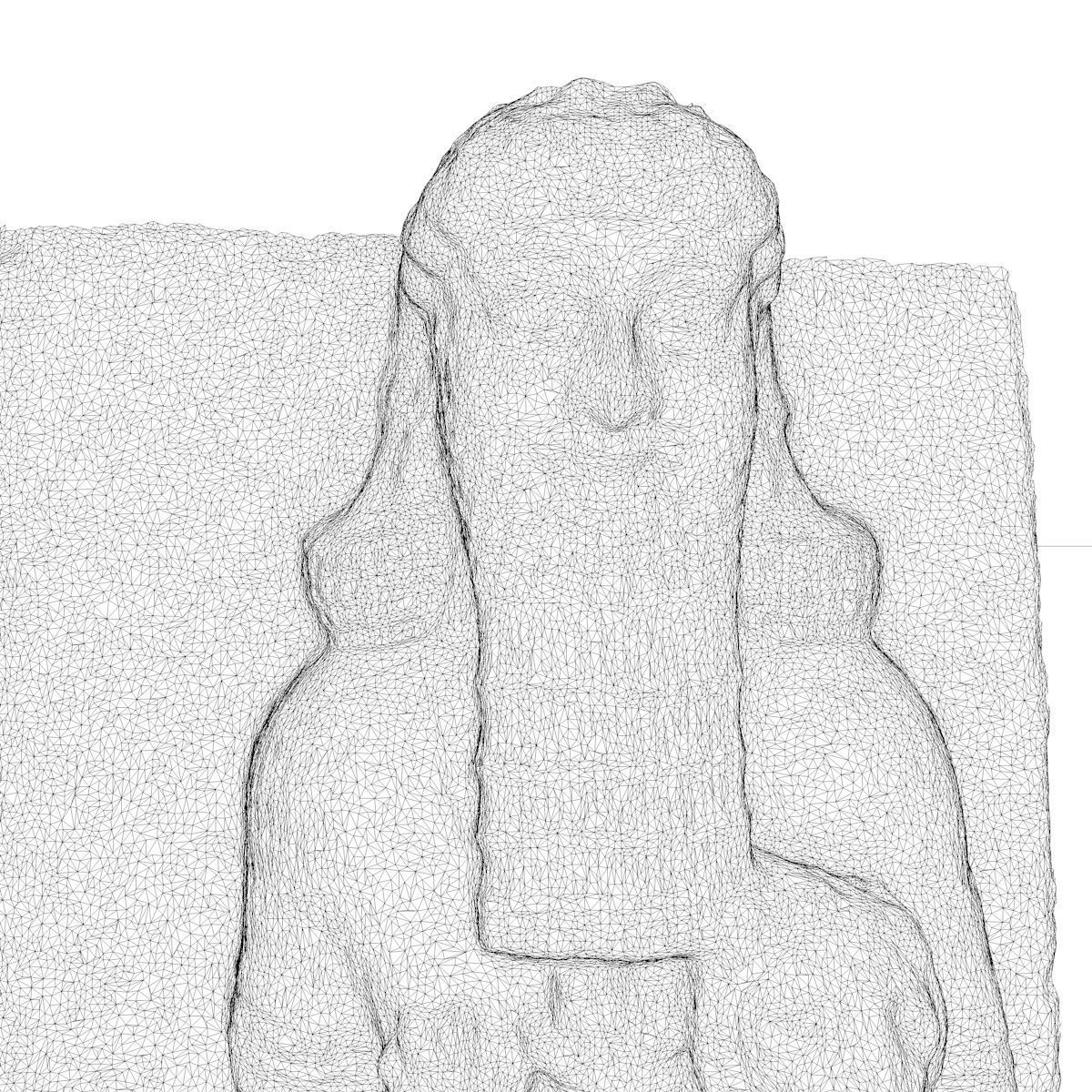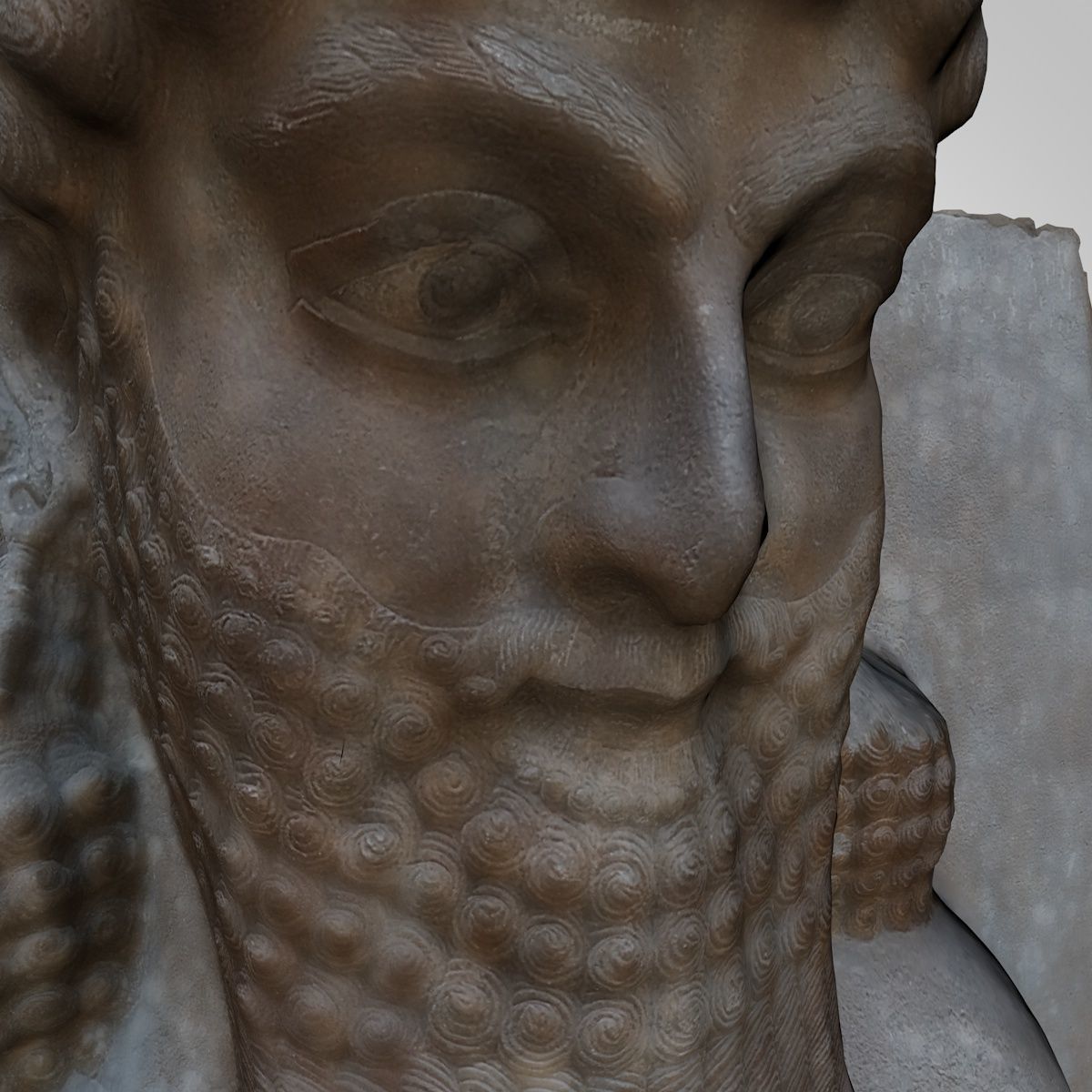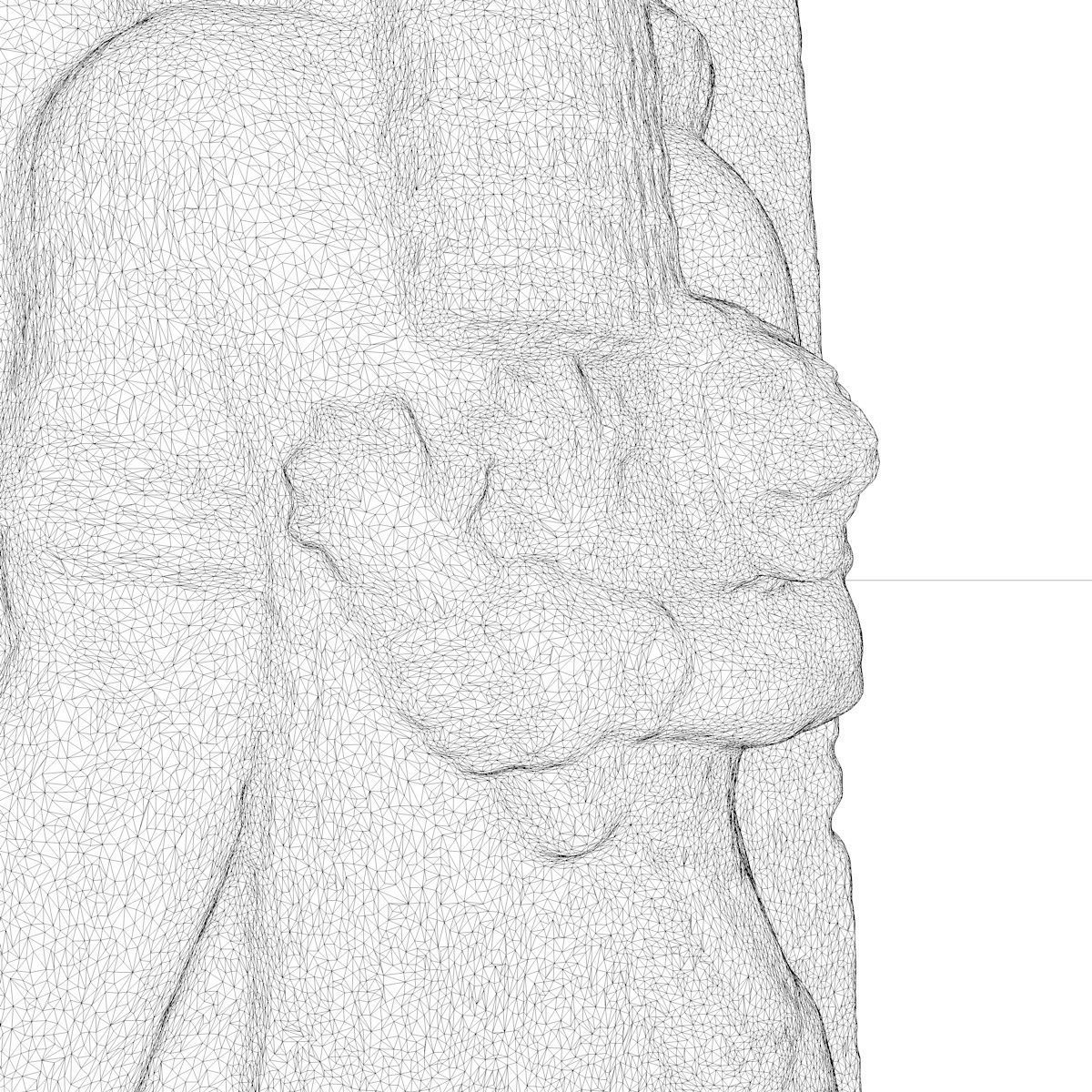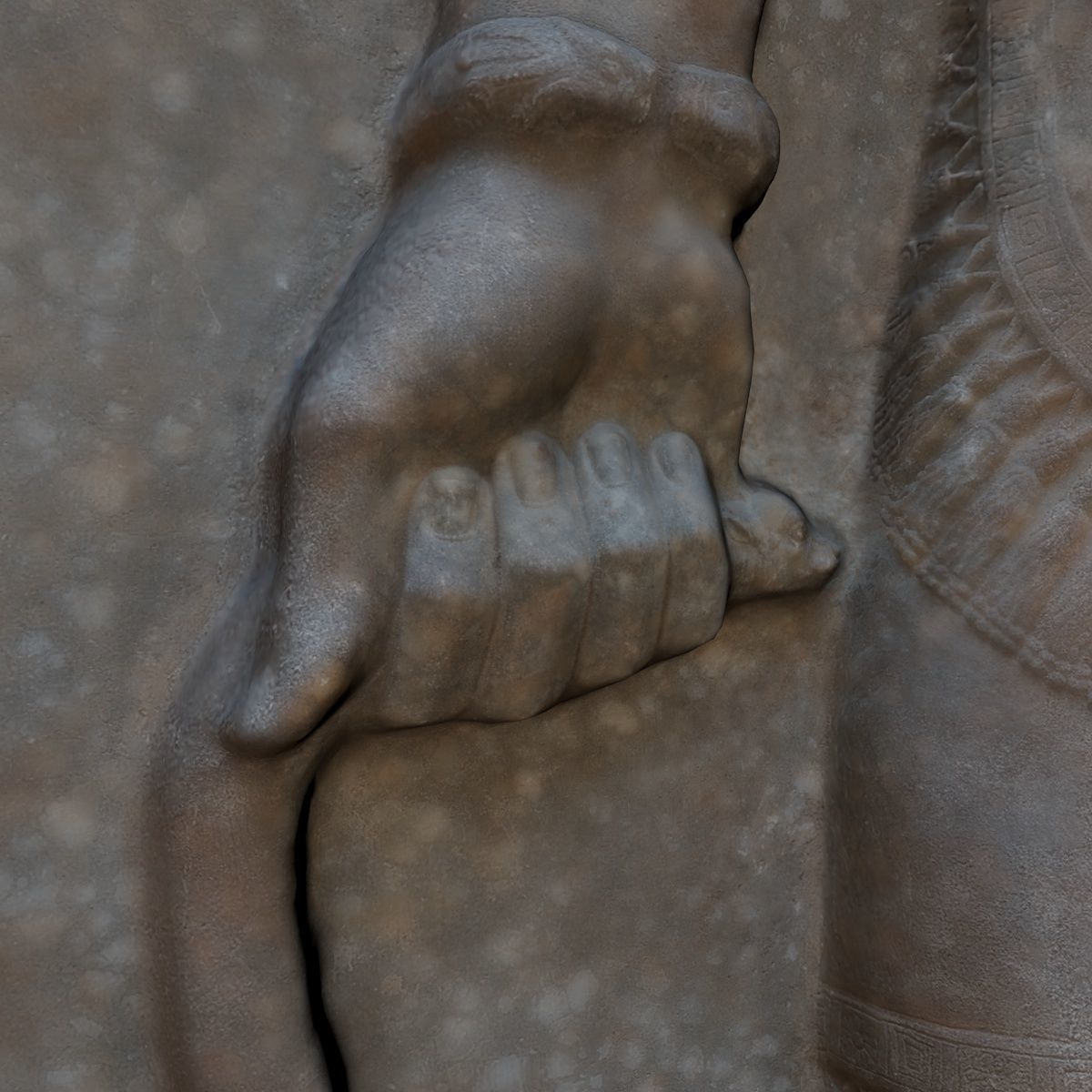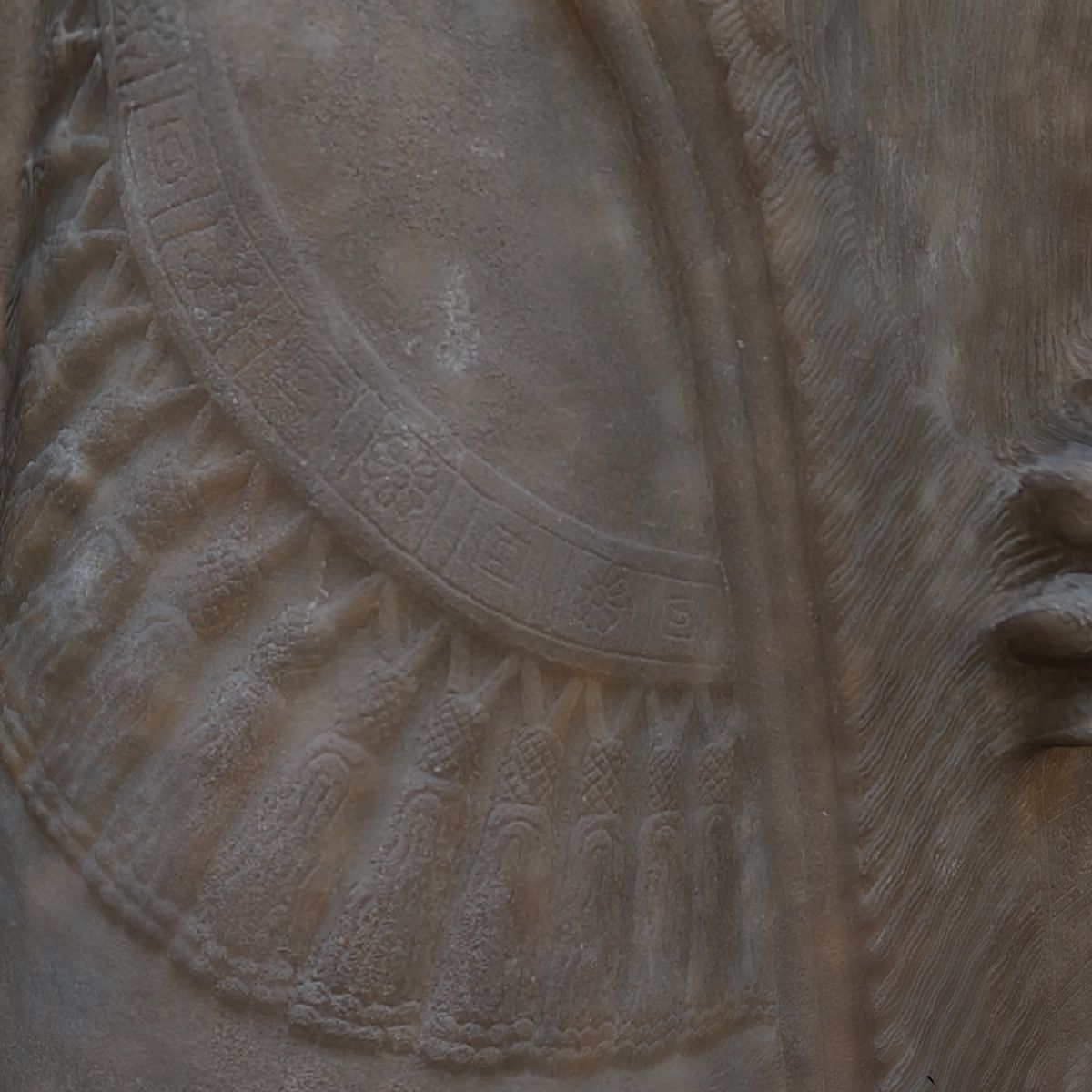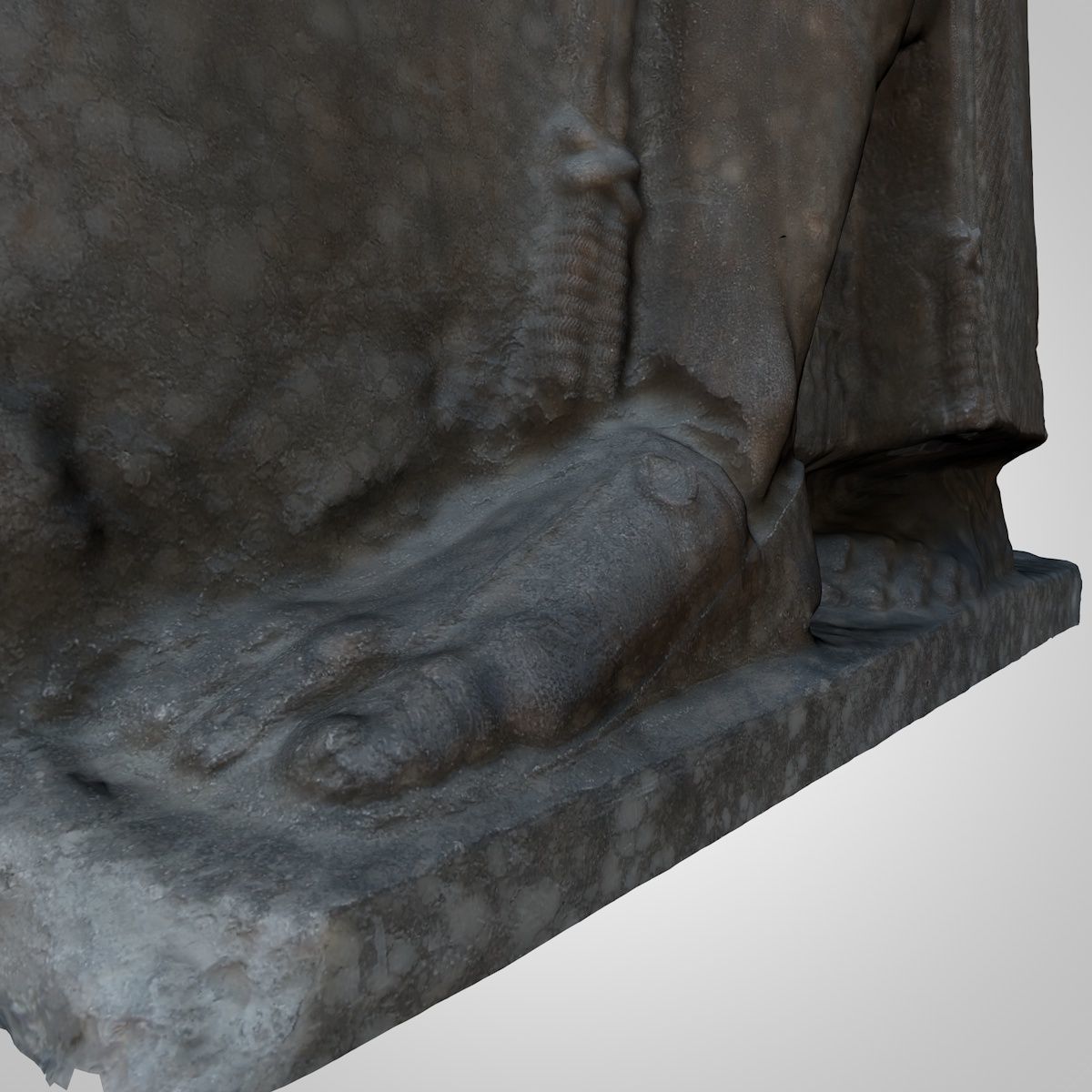
ASSYRIAN - GILGAMESH HERO OVERPOWERING A LION Low-poly 3D model
Khorsabad, northern IraqNeo-Assyrian, about 710-705 BCHeight: 5,52 metersLength: 2,18 meters
Lion-taming spirits / Statue of Gilgamesh Overpowering a lion (often identified with the hero Gilgamesh) were part of a complex architectural and decorative system governed by artistic and religious criteria. They symbolized divine and royal power, and the calm strength that emanated from them protected the palace and ensured the continuity of the ruler's power.
A complex architectural systemThis figure is a partial reconstruction of a monumental complex, which we know about from the drawings executed by Eugène Flandin in 1844 during the excavation of the entrance of the throne room of the palace of Sargon II. The outside facade of the throne room - facade N - was composed of a frieze, showing a procession of figures, and passageways guarded by colossal spirits: a pair of winged bulls with human heads and a pair of benevolent genies. The central passageway doubled this arrangement: in addition to the bulls in the passageway, there were four others along the wall, their heads turned towards the visitor. Between each pair was a lion-taming spirit: one of these figures was sent to the Louvre by Paul-Émile Botta.
A colossal figureMeasuring over five meters high, the sculpture depicts a figure choking a lion. The spirit or hero overpowering the lion is in a frontal position, which is rare in Assyrian art and used only for creatures playing a magical role. In his right hand he holds a ceremonial weapon with a curved blade, known as a harpe, which is a royal weapon. He is wearing a short tunic with a large fringed shawl over it, hiding one leg and revealing the other. The eye contact with the visitor has a magical impact. His head is sculpted almost in the round; the eyes, once brightly colored, were meant to mesmerize the visitor. His hair and beard are styled like those of Assyrian dignitaries and the king. The hero is wearing a bracelet with a rosette in the center. Excavations of the tombs of the queens at Nimrud yielded similar bracelets, which were made of gold and inlaid with precious stones to look like petals. The lion is lifting its head and baring its teeth. Its muzzle is stylized with a series of radiating folds, which are also found on metal sculptures.
A symbolic representation of royal powerThis spirit, often identified with the hero Gilgamesh, who was a legendary figure but also a historical king of Uruk, probably incarnates the omnipotence of kingship: he is effortlessly overpowering a ferocious lion. The contrast between the roaring lion and the hero's imperturbable strength highlights his magical power. The set of ten bulls and two heroes, a royal heraldic emblem, was specially created for the facade of the throne room in the palace of Sargon II. All these facades, built on the high terrace of the palace overlooking the city, were clearly visible from afar and bore witness to the king's grandeur.




